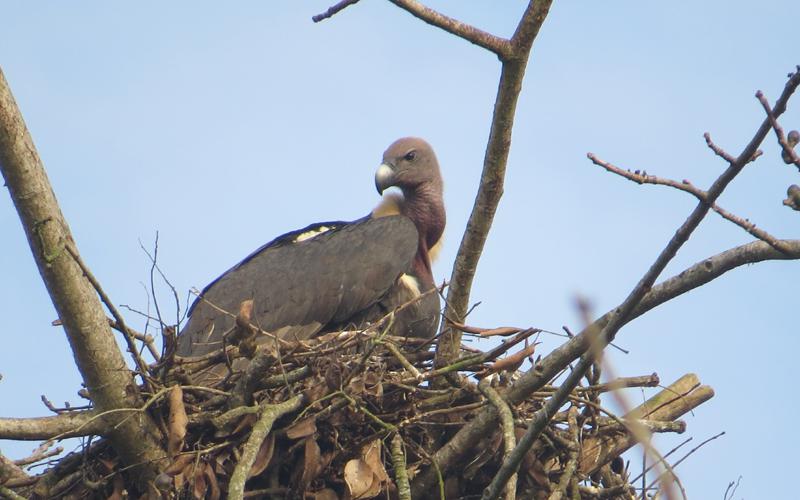Surya Man Shrestha
The aims of this project is to conserve critically endangered vulture species and its habitat in western lowland Terai region through capacity building programs and preparing baseline data relating to the seasonal population pattern in the region.

Critical Endangered White rumped Vulture (Gyps bengalensis) Nesting.
Over the period of fifteen years population of White-rumped Vulture (Gyps bengalensis) declined by 99.9% in India. Similarly, a decline of 91% was recorded for this species in Nepal since 2001/2002. Four of the nine species of vultures found in Nepal are on a verge of disappearing from the world. Realizing the rapid decline of wild populations Department of National Parks & Wildlife Conservation (DNPWC), in collaboration with National Trust for Nature Conservation (NTNC), Bird Conservation Nepal (BCN), Royal Society for the Protection of Birds (RSPB) and Zoological Society of London (ZSL) established a “Vulture Conservation & Breeding Centre” in 2008 at Kasara, Chitwan National Park, as a source for a reintroduction of vultures. The Government of Nepal also prohibited the use of Diclofenac, following its ban in South Asia in 2006. To support it, in collaboration of Government of Nepal, BCN and local communities, Diclofenac Free Zones (DFZs) have been created in 46 districts. Till now seven communities managed VSFS has been established. Due to such intensive initiation of vulture conservations program, Nepal has become able to stabilize population of critically endangered White-rumped Vulture. But, in contrast to this, nesting number of vultures has been found in declining trend in lowland Terai, Nepal.
During my previous rapid survey, I found that there is less focus given in habitat conservation. Due to which, trees in the nesting colonies have been rampantly felled, even of nesting colonies and nest existing trees. There was also found encroachment of forest area and changing to agricultural land. If similar activities continued then, it will create a serious problem for the long-term conservation of nesting/roosting habitat and the population of resident breeding vultures of the area. So, it is urgent to take action for its protection. Considering it, this project has been designed for the long-term management of the habitat and to partially fulfil leakage existing in the currently ongoing vulture conservation activities such as scientific monitoring and database management relating to the Vulture, seasonal Vulture population pattern etc.